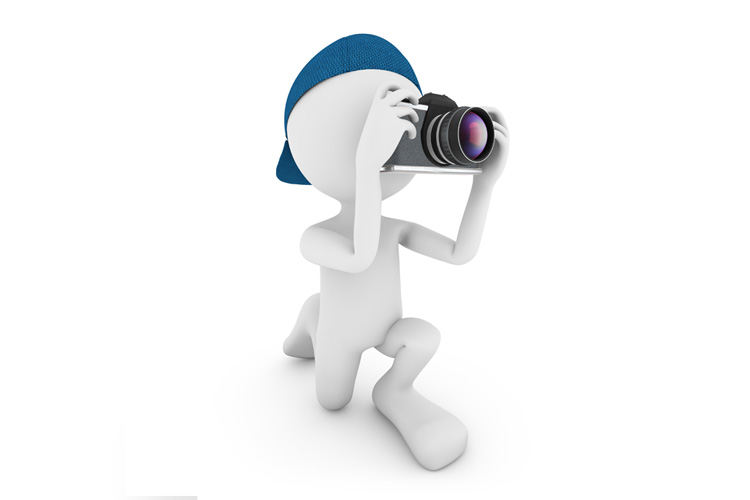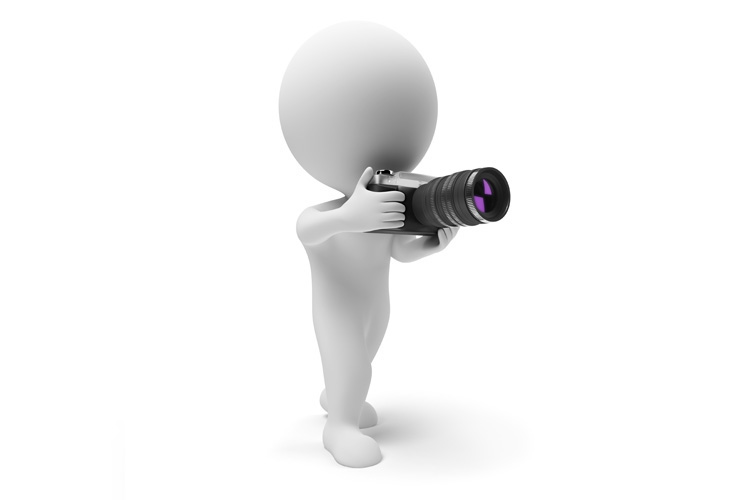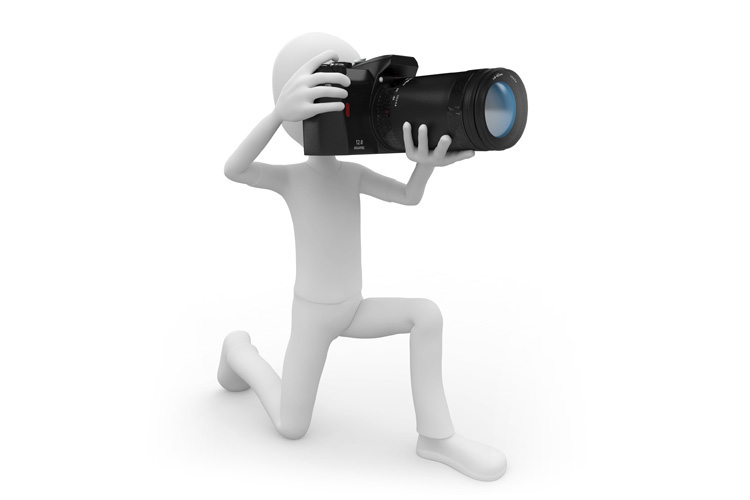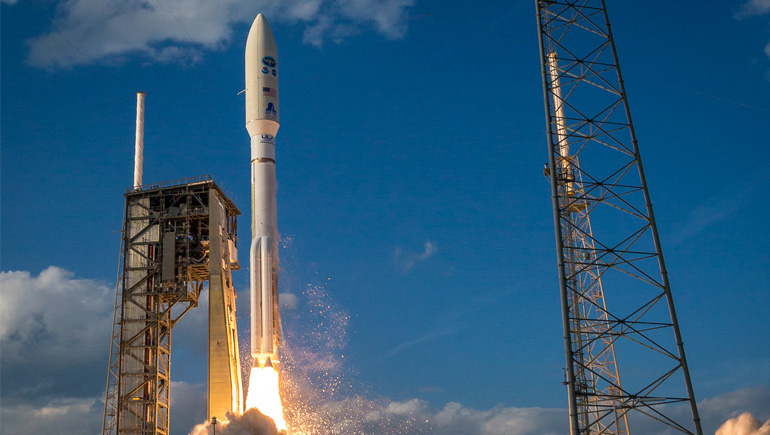I was inspired to write this post after Wednesday’s “Blind Photo Critiques” on The Grid (Rick Sammon was my in-studio guest, and he was awesome, as always). When it comes to The Grid, we often get hundreds of submissions for these monthly Blind Critiques, but we only get to show a handful on the air. One reason is many of the images are the same because many photographers are stuck in a particular stage of their development, so their photos (even if they are different types of subjects) look essentially the same. That’s why today I wanted to break these stages down so folks might see which stage they’re at, and I included my advice on how to level up to the next stage.
I’m kinda “telling it like it is” here, speaking frankly and honestly — not to hurt feelings, but sugar coating this message doesn’t help move anybody move further down their path. In fact, it almost reinforces why they should stay right where they are. So…here goes:

STAGE ONE: Camera Owner
You’ve been getting lots of good comments from friends on your Instagram posts taken with your cell phone’s camera — so much so you decided to buy a “real camera.” You were pretty sure buying a nice camera was going to take your photography over the top, and your friends can’t wait to see you blow it up on Instagram now, but…not only do your photos not look better — they look worse. This real camera thing is way more complicated than you thought, and just using it as a heavy-cell phone replacement isn’t giving you the amazing shots you thought you’d be getting. Here’s why: buying a DSLR or Mirrorless “real” camera doesn’t make you a photographer any more than buying a saxophone makes you a sax player. At this stage, you are simply “A camera owner,” and you’re just taking pictures (and you still call them “pictures”). Since you’re not getting the results you thought you should, you’re focused on trying to figure out which setting, buried deep in the menus on the back of your camera, turns on the secret feature the pros use for making great photos. You know it’s there somewhere — but where?
How to Level Up: If that sounds like the agonizing stage you’re currently at, here’s how to level up: Stop looking at the menus. Ignore all the other stuff. Just focus on learning what the Aperture (f/stop), Shutter Speed, and ISO mean, and how they work together. Forget everything else for now, because once you understand those and get used to adjusting them on your camera, you can stop worrying about the settings and start working on making great pictures (and yes, you still have to call them “pictures” for a little while longer. It’s the law).

STAGE TWO: Snapshot Maker
You’ve got a feel for how to use your camera, and you’re taking time to go out shooting. Maybe you’re doing some street photography, or heading out to the countryside and actively looking for shots. However, at this stage, you’re making tons of technical mistakes. Your horizon line is always in the center; you’ve got trees growing out of people’s heads; there are distracting things pulling the viewer’s eye away from your subject, and the rule of thirds is what you employ when you order one dessert, and the waiter brings you three forks. Since you haven’t learned the basic rules of composition yet, you don’t realize your photos have all these mistakes, so you’re actually in a fairly good place. In fact, you’re in one of the happiest places you can be as a photographer. You stink, but you don’t know it, but it’s OK because your friends aren’t any good either, so they can’t recognize that you’re making all these mistakes, so they don’t point them out. In short, you’re taking snapshots — they look like the same shot a stranger with a cell phone would get if they walked up beside you while you were taking yours. If you compared shots, they would look pretty similar; yours would just have more megapixels. The good news is at least you’ve stopped calling them “Pictures.”
How to Level Up: If that sounds like you (if you thought to yourself, “what’s the rule of thirds?” it’s you), you need to do some learnin’. Buy a book – take an online course (I know, it sounds like I’m plugging my stuff, but this is what I’d tell a friend), or join your local photo group and tell them right up front, “I’m new to this.” You need local photography friends. You can help each other, share what you’ve learned, and you’ll have someone to go shooting with and so you’ll go shooting more often. Photographers at these groups are really happy to help new photographers when they meet them in person. However, for your progress and self-esteem, I would absolutely stay out of public online photography forums. This is where angry people gather to attack anyone showing even the slightest sign of weakness. You might eventually find an answer you were looking for, but it may exact an emotional toll along the way. Make local friends, do a photo walk, attend the local group. You’ll level up much faster, and have more fun doing it.

STAGE THREE: Photo Taker
You’ve learned the basic rules; you’re very comfortable with your camera, and you’re going out shooting pretty regularly, but what you’re spending your time shooting at this stage are photos that you think you’re supposed to shoot. Things that you think more accomplished photographers would shoot, and you convert your images to black and white because they feel more ‘serious’ and more ‘artsy’ to you, (but most of these images don’t really make great black and whites anyway). It’s like you’re saying to yourself, “This is what a good photographer would be shooting…right?” You’re shooting dead tree photos, homeless people in town, railroad tracks, the old bridge, and while they are technically good, they’re not interesting (well, they’re interesting to you but only because you’re experiencing what they call the “Gee, I made that!” effect. You’re excited at what you made because you made it, and you’re impressed that you could do that. Everybody else sees a black and white photo of a bridge in bad light – one they drive past every day, and to them, it looks just like it looks. You want people to look at your images and say “Wow!” Not, “yup, there’s the old bridge.”
How to Level Up: To move up at this stage, you need to figure out what type of photographer you want to be. Think about where are you are focusing your time and energy today photographically. It’s important to take a moment to think about that because that’s where you’re headed. You can’t be great in every genre — you’ve got to pick some topic, some category and really focus on it. Be it flower photography or portraits; landscape or travel, wedding or commercial products — if you want to get really good at something, you’ve got to find what that something is. What’s the thing that really excites you — the thing people tell you-you’re really good at? What do you seem to really have a knack for? Listen to that voice inside you, and follow where it leads. Once you figure out what that genre is, you need to go all in. You need to study everything you can get your hands on; you need to read the top three books on the topic; you need to start getting the equipment together you’ll need to be a success, and you need to pour your time, energy, and most importantly practice into that nailing that genre. Don’t just read about it, and watch courses, that will make you an authority on the topic — but that won’t create great images. Practice will. That’s the secret at this stage — find out what it is you want to be, and focus on that; practice that, dive into that. You’ll be amazed at the results.

STAGE FOUR: Emerging Photographer
You’re getting there. You’re doing lots of projects you see on the Web. You’re photographing water splashes, and you’re doing the ‘steel wool at night spark trick,’ and you’re doing long exposure shots of cars driving by; and you’re adding edgy film-look borders around your images. You’re learning lots of different, fun techniques one after another. These personal assignments make you feel like you’re really growing, and if a client were to call and they needed a steel wool sparks photo or a water drop, you’d get that gig in a heartbeat. You’ve upgraded your gear, you’ve bought some really nice lenses (and you call your lenses “glass”), and you’re not taking pictures, and you’re not taking photos, you’re creating “images.” You’re starting to think about getting a camera body that’s been converted for infrared, and you have long conversations with other photographers about the type of bokeh certain lenses have. You feel like you’re really making progress, but inside you know you still have a lot to learn (which is why you’re talking about bokeh — it makes you feel “next level,” but in reality, the next level shooters don’t talk about bokeh). In fact, the more you learn, the more you realize how much there really is to learn about the bigger picture of photography, and when you watch a course from Jay Maisel, you realize how truly far you have to go. The good news is: you now fully realize there is no setting in your camera that makes great photos. In fact, you’re almost at the point where you realize how little the camera make and model even matter.
How to Level Up: You’re good at all the technical stuff, so put down the camera, and start looking at the work of photographers you admire. Don’t just look at it. Study it. Break it down. Become a photographic detective — figure out where they put the light, or where they positioned their subject. Look at their subject. Look at the scene, how they composed it. Figure out what it is about their work that makes their images so special. If you can’t figure out how they’re doing it, what chance do you have of stumbling upon it in your work? You have to study and learn how the masters do it, and you have to learn how to emulate their looks, so your own look and your own style will emerge from it (by the way, none of your personal style and look will include steel wool). Remember, you’re not just looking, you’re studying — study the work of the type of photographer you want to be — that’s how you level up. You know what your goal is. What you’re aiming for, and now perhaps even how to get there. The agonizing part of this is simply that there is no shortcut — you have the road map now, but you have to make the trip to get there. There are no shortcuts for experience — you get experience by doing it again and again. Through practice. Through trying and failing, and you keep on trying. I think it was Caesar who said, “Experience is the teacher of all things.” He also said, “This salad could really use some croutons.” This is the 2nd most agonizing and frustrating stage of being a photographer because breaking out of this stage isn’t something you buy. It’s not a camera. It’s not a lens. It’s seeing. It’s creativity. It’s things they don’t sell.

STAGE FIVE: Frustrated Photographer
You’re an accomplished photographer at this stage. A pro-level shooter. You’ve entered photo contests, maybe even won a few. You’re getting some paid work here and there, too. You’re confident in your skills, you’re getting the most from your gear, and you know it inside and out. In fact, you’re so confident that you don’t have to even think about it that much — it’s all second-nature at this point, in fact, it’s becoming routine. You should be absolutely delighted at this stage, but in reality, this is the #1 most-agonizing stage. You’re perhaps more frustrated and disappointed with your own work than any time in your career. It’s because you know in your heart, your best images are still inside you, but you can’t for the life of you coax them out. You look at the best image in your portfolio, and you think to yourself, “I know I can make a better image than this one.” And you know what? You’re actually right. But it’s going to take some work. The better you get, the harder it is to get measurably better. When you were in Stage Two and Stage Three, you were making big progress. Now, you don’t learn something new every day. Maybe you pick up something new just once every couple of months. How do you make amazing images when you’re learning so little?
How to Level Up: You’re going to need to stretch yourself, but do it in a way that’s relevant and meaningful to the type of photographer you are. It’s time to invest in yourself. It’s time to invest in making the kind of images you’ve always dreamed of. This is serious, personal work, and something that can propel you and keep you engaged and growing for years to come. For example, if you’re a landscape photographer, don’t buy another lens or a better camera body. Buy an airplane ticket. Travel to Patagonia, or Greenland. Head to the Sahara Desert or Namibia or Antartica. Go to places that will inspire you; places that will challenge you; places where you have opportunities to make the shots of a lifetime. It’s not going to happen at that barn in Wyoming or at Delicate Arch in Moab. You need to go “next level.” If you’re a fashion photographer, go to New York, LA, Miami, London or Milan. Hire a brilliant stylist, an incredible make-up artist, and a fantastic model, and shoot in a world class location. You need a great team, and the best ones are literally in those cities. It will transform your work more than a new body, or a new lens will ever do. If you’re an automotive photographer, stop shooting Camaros on top of an empty parking garage. Fly to an amazing location (maybe the Scottish Highlands, or even Mount Tam or the Pacific Coast Highway in California); rent a Ferrari (or a Bentley or a Jag), and do it right. It’s time to invest in yourself and into creating those images that push you, your images, and your career forward.

I hope you found that helpful, and if you saw yourself in one of those stages (we’re all in one of them, or transitioning between them, right?), don’t get upset or be defensive, especially if one hit really close to home, and it’s a stage you’re not happy identifying with. We all just want the same thing. We want to make great images, and we want to have fun doing it. Wherever you are in your journey, whichever stage you’re at, just know you’re simply passing through it. Don’t focus on where you are; focus on how to level up, and you won’t be at that stage very long.
I wish you the very best on your photographic journey. :)
Best,
-Scott





Hey Scott, that’s the best I’ve read for some time about photography! I wonder how you could nail it.
So much interesting! I’m definitely at stage 5, my gear went from 2 bodies and 4-5 lenses to just 1 body and 1 lens. I used to shoot composite portraits and landscapes, but with time I realized I was more drawn to landscape photography. My challenge now is to travel more often to new places.
Hi, Marius – knowing what you now you, and what the challenge is that lies ahead for you – that’s a huge advantage. I’m glad to see it – you’re on your way, and I wish you the best. :)
Thanks a lot
Great post Scott! I would say I am as frustrated as someone can possibly be! Friends around me say how great I am as well as my images, and I look at them and I keep seeing so many flaws. They say I know a lot about Photography and I’ve never been so aware of how little I in fact know… The good thing though is being at stage 5, means I have walked the four previous ones. This is when your post becomes incomplete: there is more beyond these 5 stages!
It is probably another set of 5 stages, but we will be talking “major league” stages. Where is Joe McNally? Where is Lindsay Adler? Where is Frank Doorhof? Where is Rick Sammon? Where are you, Scott? You’re hiding the major league steps from us :)
Words of wisdom Scott from someone I’m sure who has gone through these stages at one point. This post caused me to critically think about where my photography is going and what I want to really focus on. Thanks Scott. This post better be on the best of the best at years end.
Scott, this is a great post, and to show how great it is, I will even print this puppy off and refer to it from time to time. This is one of the better posts you have done. You are at your best in this type of discussion. Thanks and well. done.
Oh for sure. Some of those phases can last a really long time. I would recommend joining KelbyOne. It’s a wealth of reliable resources for moving through each phase and nudging you when you’re stuck.
I’m with you, Tina – great idea! :)
Hi Scott, that was a brilliant article – one of the best I have read for a long time. I just recognise so much in what you have said and can visualise the path ahead so well, frustrations and all. Thanks for all your advice – K1 included, it’s a brilliant resource and I am looking forward to continuing the journey with you. Best wishes to you and the K1 team.
Thank you so much for the kind words, RobD – much appreciated! I wish you the best. :)
Nice article Scott.
Great post Scott. I’ve been through most of or all of the phases….but I have to ask, what’s wrong with Camaros???
Great post — nice to see then stepping stones laid out so clearly. The past couple of months, I feel like I’m at Stage 5, and am working harder yet. Often, when I go out, I think of the story that Jay Maisel tells of how he and a young assistant were driving through Manhattan and the kid lamented about finding nothing to shoot. The errand boy goes to deliver the package and 10 minutes later comes back to find that Mr. Maisel has created (to me) the most indelible image of the NYC skyline I’ve ever seen. As satisfied as I sometimes feel, the story reminds me of the level of enlightenment someone like Mr. Maisel has achieved, and I am a mere “grasshopper” — simultaneously face-slapping and inspiring to try harder. I think it was Greg Norman who said that a perfect score in golf is 18 — something no one will ever achieve, yet we happily go out there in pursuit of it.
Your only article that I have read, that is better, was years ago.
The basic theme was, in this age of social media where every picture is posted, the best way to improve people’s impression of your photography , is to only show your best work.
Thanks for your sharing.
I feel like I’m at stage five, I’m already doing some of what you advise – traveling to amazing places. An aspect of traveling to improve photography I think is important, Have at least some of that time specifically allocated for photography – it’s easy enough to travel to an amazing destination and be just a tourist, but to spend time seriously photographing when there you should make the effort to request special access or hire a guide for a specific place that can get you into a place earlier than other tourists or with improved access. Along with improved access you can often get permission to use more advanced gear like tripods or lighting. Traveling for photography also means a commitment to lug along more serious gear than you would otherwise if you are just there as a tourist, so you have creative flexibility to shoot what is there if you have not experienced a place before. It doesn’t have to be the whole trip, especially if you are traveling with family and they do want to do some normal tourist stuff – but try to figure out how to work in large blocks of time in special places that are all about photography.
Excellent article and advice Scott. Surely this is a roadmap for all of us. I wonder though how you explain all of the famous pros, including you, who seemingly ignore Stage Three and successfully work in multiple diverse categories. Moose Peterson, RIck Samon, Joe McNally and you come immediately to mind. Airplanes, weddings, wildlife, cars, fashion, etc don’t have much in common.
Thanks for the great article Scott!!
When I joined Kelbyone in mid 2012, I was probably somewhere’s between stage 1 & 2. Happy to say that I’m now at stage 5. Kelbyone has been the best investment I’ve made in my photography… bar none.
This is one of the best articles I have ever read. And although it pertains specifically to Photography in this case with some change of wyrding it could apply to any passion a person has. Musicians, football players, chefs…
Scott you have outdone yourself and that’s not an easy task. Way to go. Thank you for this.